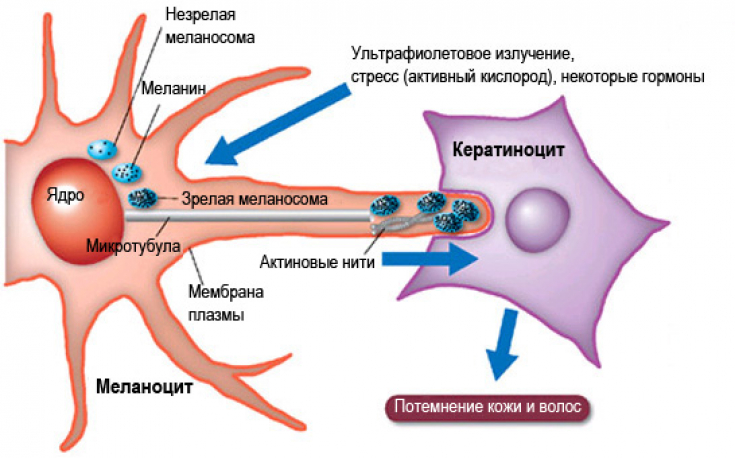Pigmentary disorders are quite common, however, many of them are quite easy to manage with the use of skin-lightening cosmetics and procedures. Current treatments for melasma are aimed at reducing melanin synthesis, and cosmetic procedures are aimed at accelerating skin lightening, however, the effect of even combined treatment is likely to be temporary, since melasma – it is a disease that is believed to have a hormonal etiology.
Tranexamic acid has been used for the treatment of melasma relatively recently, but there is already evidence of the effectiveness of this treatment method, more about which you can read on estet-portal.om in this article.
Melasma: who gets pigmentation and why
Melasma – this is a chronic symmetrical pigmentation disorder characterized by the appearance of pale brown pigmented spots on exposed areas of the skin, and especially on the face.
Melasma is more common in women of reproductive age, with the debut of the disease occurring during or after pregnancy.
Sex hormones, genetic predisposition, ultraviolet radiation, oral contraceptives, as well as some cosmetics and medicines play an important role among the factors that can provoke the disease.
Hyperpigmentation: an actual problem of modern cosmetology
Currently used for the treatment of melasma:
• hydroquinone;
• tretinoin;
• corticosteroids;
• non-steroidal depigmenting creams;
• superficial chemical peels (glycolic, trichloroacetic, lactic acid);
• laser.
However, despite various combinations of medical and apparatus methods of treatment, the results of melasma therapy are most often unsatisfactory. After treatment, a relapse of the disease is often observed.
You may also be interested in: Melasma lasers
Tranexamic acid: a new word in the treatment of melasma
Recently, tranexamic acid has been recommended for the treatment of melasma, which can be administered either orally or topically. This is probably one of the first drugs that has proven effective in the treatment of melasma. Another substance that supposedly allows you to fight this disease – it is glutathione, but its effectiveness is still questionable.
Tranexamic acid – it is a well-known antifibrinolytic agent that has been used for many years to treat menorrhagia.
For the treatment of melasma, this substance is prescribed in low doses – 250 mg twice a day. However, before starting treatment, it is important to study the patient's coagulation profile in order to avoid unwanted side effects.
Read the latest articles in Telegram
Mechanism of action of tranexamic acid on melanogenesis
Sun exposure to the skin leads to the synthesis of plasmin activator, which thus increases plasmin activity in keratinocytes. Plasmin leads to the release of arachidonic acid, which stimulates melanogenesis.
Tranexamic acid prevents UV-induced pigmentation by interfering with plasminogen binding to keratinocyte.
Thus, tranexamic acid inhibits melanocyte activation by UV radiation, as well as hormone-induced melanocyte proliferation. It can be used as a standalone treatment or in combination with other skin lightening products. However, more research is needed to standardize the dose and duration of melasma treatment with tranexamic acid.
Correction of hyperpigmentation: the choice of effective treatments for melasma
You might be interested in: Express Skin Treatments.








Add a comment